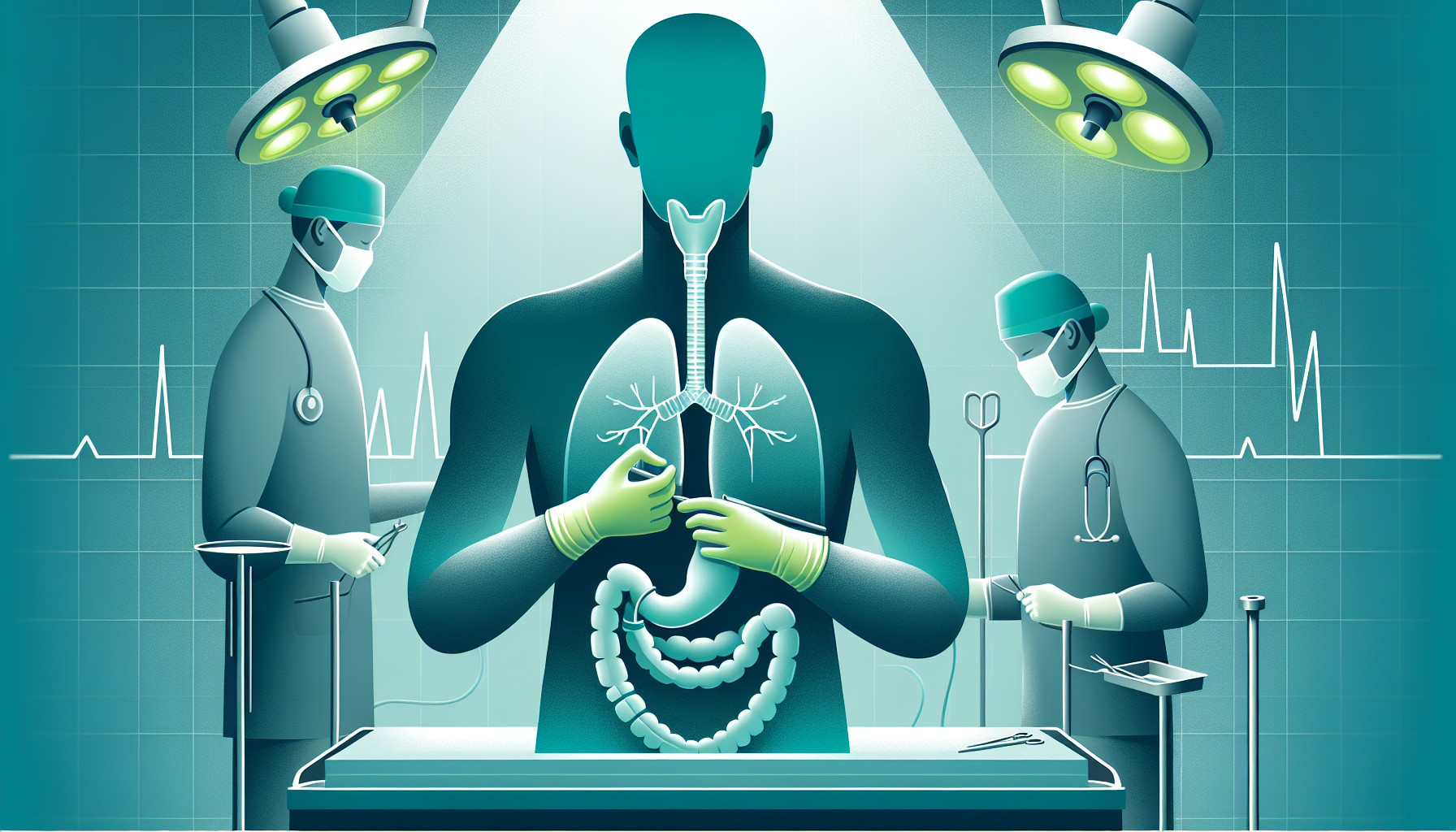Our Summary
This research studied the best way to detect a return of cancer in people who had surgery to remove esophageal cancer. It compared two methods: surveillance imaging (SI), which uses scans to look for signs of cancer, and history and physical examination (HPE), which involves a doctor asking about symptoms and physically examining the patient.
Researchers looked at the medical records of 225 patients who had surgery to remove esophageal cancer between 2007 and 2018. They found that both methods detected about the same number of cancer recurrences, but those who had surveillance imaging lived longer after their cancer came back compared to those who only had HPE.
This suggests that while both methods can find cancer recurrence, getting scanned may give patients a survival advantage, possibly because it catches the recurrence earlier. Therefore, the researchers suggest that using surveillance imaging as a standard follow-up method may be beneficial for patients after they’ve had surgery for esophageal cancer.
FAQs
- What were the two methods compared in the research for detecting a return of esophageal cancer?
- Which method was found to give patients a survival advantage after surgery for esophageal cancer?
- What did the researchers suggest as the standard follow-up method for patients after they’ve had surgery for esophageal cancer?
Doctor’s Tip
A doctor might suggest to a patient who has had an esophagectomy for esophageal cancer to undergo surveillance imaging regularly to detect any cancer recurrence early on and potentially improve their chances of survival.
Suitable For
Patients who have had surgery to remove esophageal cancer are typically recommended esophagectomy. This includes patients who have had early-stage esophageal cancer, as well as those with more advanced disease who have undergone neoadjuvant therapy (chemotherapy and/or radiation therapy before surgery). Patients who have a high risk of cancer recurrence, such as those with large or poorly differentiated tumors, lymph node involvement, or positive surgical margins, may also be recommended esophagectomy.
Additionally, patients who have a good performance status and are otherwise healthy enough to undergo surgery are also good candidates for esophagectomy. Patients who are unable to tolerate surgery due to other medical conditions, such as severe heart or lung disease, may not be recommended for esophagectomy.
Overall, the decision to recommend esophagectomy for a patient with esophageal cancer is made on a case-by-case basis, taking into account the patient’s overall health, the stage and characteristics of the cancer, and the potential benefits and risks of surgery.
Timeline
Before esophagectomy:
- Patient is diagnosed with esophageal cancer through imaging tests, endoscopy, and biopsy
- Patient undergoes pre-operative evaluations, including blood tests, chest X-ray, CT scan, and other imaging tests
- Patient may undergo chemotherapy and/or radiation therapy to shrink the tumor before surgery
- Patient meets with a surgeon to discuss the surgery, risks, and potential outcomes
After esophagectomy:
- Patient undergoes surgery to remove part or all of the esophagus
- Patient stays in the hospital for a period of time to recover from surgery
- Patient may experience side effects such as difficulty swallowing, reflux, weight loss, and fatigue
- Patient undergoes follow-up appointments and tests to monitor for cancer recurrence, including surveillance imaging or history and physical examination
- If cancer recurs, patient may undergo further treatment such as chemotherapy, radiation therapy, or additional surgery
Overall, the timeline for a patient before and after esophagectomy involves a series of diagnostic tests, pre-operative preparations, surgery, recovery, and follow-up care to monitor for cancer recurrence and ensure the best possible outcomes.
What to Ask Your Doctor
- What is the purpose of surveillance imaging (SI) compared to history and physical examination (HPE) in detecting cancer recurrence after esophagectomy?
- How often should I expect to have surveillance imaging after my esophagectomy?
- Are there any specific symptoms or signs I should be aware of that may indicate a recurrence of cancer?
- What are the potential risks or side effects associated with surveillance imaging?
- How will the results of surveillance imaging be communicated to me and what will be the next steps if cancer recurrence is detected?
- Are there any lifestyle changes or additional screenings I should consider to reduce my risk of cancer recurrence?
- Will insurance cover the costs of surveillance imaging after my esophagectomy?
- Are there any alternative follow-up methods or treatments that may be beneficial in monitoring for cancer recurrence?
- What is the likelihood of cancer recurrence after esophagectomy and how does surveillance imaging help to improve outcomes?
- Are there any ongoing research studies or clinical trials related to surveillance imaging and cancer recurrence in patients who have had esophagectomy?
Reference
Authors: Chang C, Linden PA, Jiang B, Sarode A, Bachman K, Towe CW, Argote-Greene L, Worrell SG. Journal: Ann Thorac Surg. 2022 Jul;114(1):211-217. doi: 10.1016/j.athoracsur.2021.10.021. Epub 2021 Nov 16. PMID: 34793765
